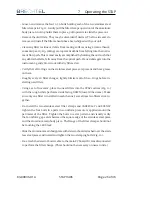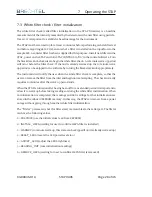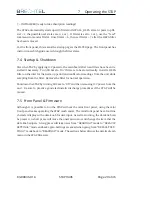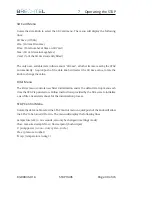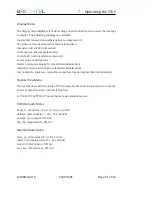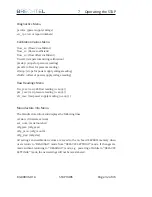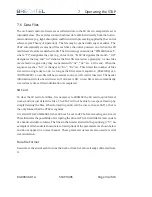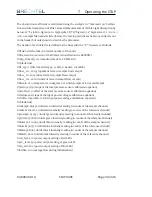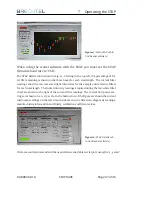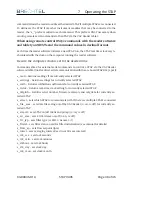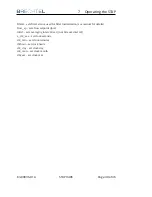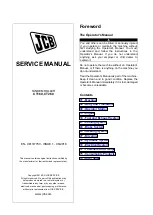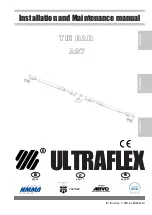
7
Operating the STAP
• Loosen and remove the four 2-56 bolts holding each of the two stainless steel
filter clamps in Fig. 12. Gently pull the filter clamps up and out of the aluminum
body piece. An oring holds them in place, pull upwards to slide the piece out.
• Remove the old filters. They may be discarded if desired. The fine tweezers to
remove and install the filters should have been shipped with your unit.
• Clean any filter residue or debris from mating surfaces using a clean ethanol-
soaked wipe or Q-tip, taking care to prevent debris from falling into the instru-
ment flow path. This is most easily accomplished by holding the unit such that
any debris that falls, falls away from the optical path. If any debris gets into the
instrument, gently blow it out with dry filtered air.
• Verify that all O-rings on the stainless steel pieces are present and have grease
on them.
• Roughly every 20 filter changes, lightly lubricate all of the o-rings before in-
stalling new filters.
• Using a set of tweezers, place two new filters into the STAP cavities (Fig. 12)
with the rough white perforated side facing DOWN (toward the dome). Make
sure only one filter is installed in each channel; sometimes two filters stick to-
gether.
• Re-install the two stainless steel filter clamps and CAREFULLY and EVENLY
tighten the four bolts in a pattern so uniform pressure is applied around the
perimeter of the filter. Tighten the bolts in a star pattern and visually verify
that a uniform gap exists between the square edge of the stainless steel piece
and the aluminum main body piece. The flange of the filter clamps should not
be touching the LED block.
• Slide the aluminum main body piece with detector board attached over the stain-
less steel pieces and install and tighten the two clamping bolts (Fig. 10).
• Re-attach the detector board cable to the main PC board if it was disconnected
to perform the filter change. (This should not be necessary on newer units.)
83-00036-01A
STAP 9406
Page 26 of 46















